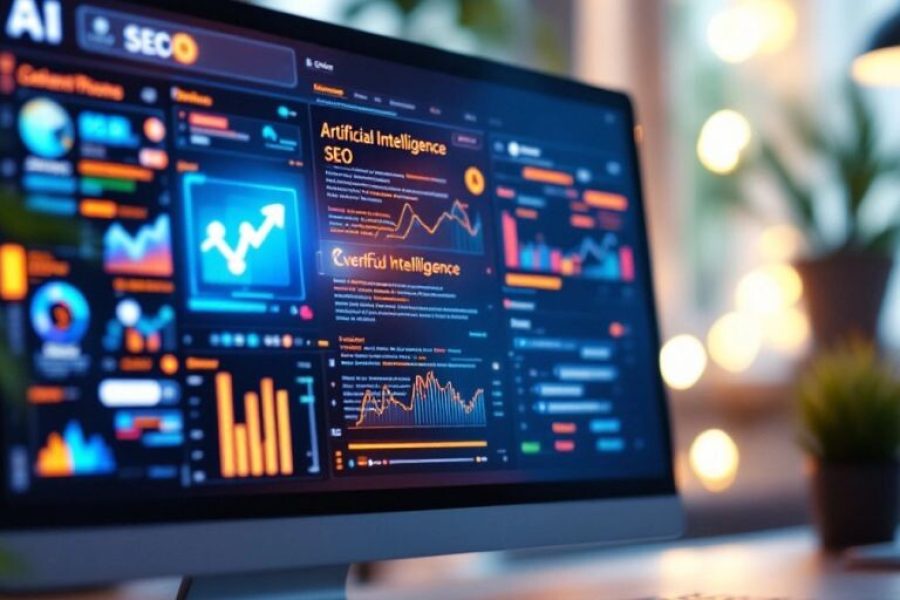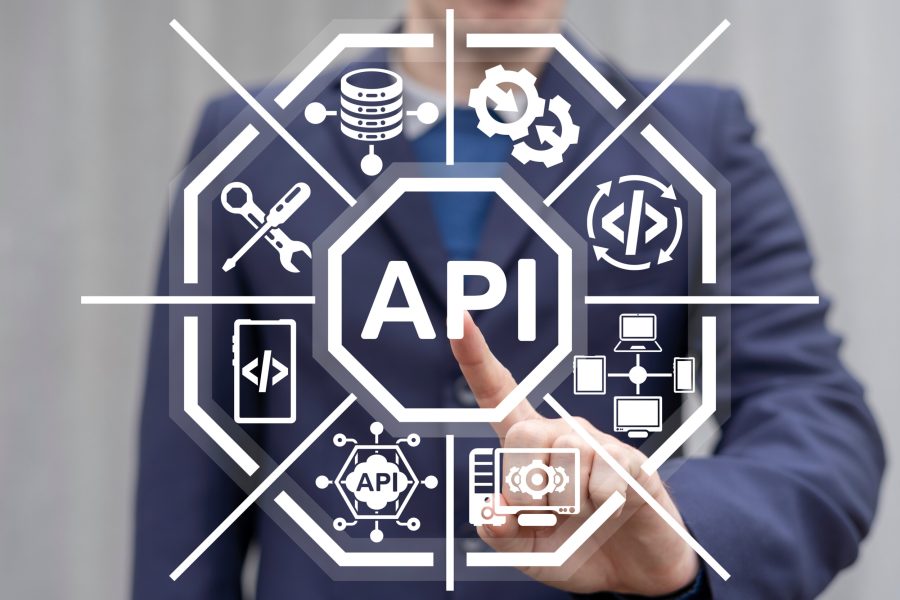AI-powered predictive analytics is revolutionizing marketing by making data-driven decisions that can significantly boost campaign ROI. By leveraging AI, businesses can predict future trends, personalize customer experiences, and optimize their marketing strategies in real time. This article explores the role of AI in predictive analytics, its benefits, implementation steps, and success stories from various companies.
Key Takeaways
- AI enhances predictive analytics by providing more accurate and timely predictions, enabling businesses to make data-driven decisions.
- Implementing AI in marketing campaigns involves steps like data integration, choosing the right tools, and overcoming challenges such as data privacy concerns.
- Personalization and real-time data analysis are crucial for optimizing marketing strategies and improving customer engagement.
- Future trends in AI-powered predictive analytics include emerging technologies, the growing role of AI in marketing, and the need for businesses to prepare for these advancements.
Understanding the Role of AI in Predictive Analytics
Defining Predictive Analytics
Predictive analytics uses data to foresee potential consumer scenarios. It helps businesses plan their campaigns to maximize opportunities—the only way to remain ahead in today’s competitive market.
For example, a movie theater can use predictive analytics to determine what types of movies people prefer and when they’re most likely to purchase tickets. This helps management make data-driven decisions about which movies to show and when to show them.
How AI Enhances Predictive Capabilities
Predictive analytics has transformed numerous industries using machine learning algorithms to identify trends and patterns. But with the help of artificial intelligence, predictive analytics becomes an even more powerful tool.
AI streamlines data processing, detects anomalies, and identifies new variables that affect consumer decisions, significantly enhancing decision-making processes. Machine learning (ML), a type of AI, allows systems to learn from experience without explicit programming. This means they can learn, reason, and adapt to new situations as humans do.
Key Benefits of AI-Powered Predictive Analytics
AI-driven predictive analytics offers several benefits:
- Faster Data Insights: AI can process massive amounts of data quickly, providing faster insights.
- Improved Accuracy: AI algorithms can identify patterns and trends that might be missed by traditional methods.
- Enhanced Personalization: By analyzing customer behavior and preferences, AI can help create customized marketing messages and promotions.
AI-powered predictive analytics is a cutting-edge tool that is transforming marketing decision-making by providing businesses with the foresight to anticipate market trends, understand customer preferences, and personalize marketing efforts.
In summary, AI enhances predictive analytics by making data processing more efficient, improving accuracy, and enabling better personalization in marketing campaigns.
Implementing AI-Powered Predictive Analytics in Marketing
Steps to Integrate AI in Marketing Campaigns
To successfully integrate AI into your marketing campaigns, follow these steps:
- Identify Objectives: Clearly define what you want to achieve with AI, such as improving customer engagement or increasing sales.
- Collect Data: Gather data from various sources like customer interactions, purchase history, and social media engagement.
- Choose the Right Tools: Select AI tools that fit your needs, whether it’s for data analysis, customer segmentation, or personalized marketing.
- Train Your Team: Ensure your team understands how to use AI tools effectively.
- Implement and Monitor: Launch your AI-powered campaigns and continuously monitor their performance to make necessary adjustments.
Tools and Technologies for Predictive Analytics
Several tools and technologies can help you leverage AI in predictive analytics:
- Machine Learning Platforms: Tools like TensorFlow and PyTorch can help build predictive models.
- Data Analytics Software: Software such as Tableau and Power BI can visualize data insights.
- Customer Relationship Management (CRM) Systems: CRMs like Salesforce can integrate AI to predict customer behavior.
- Marketing Automation Tools: Platforms like HubSpot and Marketo can automate and optimize marketing efforts.
Challenges and Solutions in Implementation
Implementing AI-powered predictive analytics comes with its own set of challenges:
- Data Quality: Poor data quality can lead to inaccurate predictions. Ensure your data is clean and well-organized.
- Integration Issues: Integrating AI tools with existing systems can be complex. Work with IT to ensure seamless integration.
- Cost: AI tools can be expensive. Start with a pilot project to demonstrate ROI before scaling up.
- Skill Gaps: Your team may lack the skills to use AI tools effectively. Invest in training and development.
By leveraging AI, marketers can gain a deeper understanding of their target audience, personalize their campaigns, and optimize marketing efforts to maximize the return on investment (ROI) of their campaigns.
Optimizing Campaign ROI with Predictive Analytics
Personalization and Customer Segmentation
Predictive analytics helps you understand your customer’s preferences and future actions. By analyzing data from various touchpoints, you can create dynamic customer segments based on predictive behaviors, not just static demographics. This allows for precise targeting and crafting messages that speak to individual needs and preferences.
Real-Time Data Analysis and Strategy Adjustment
In today’s fast-paced market, adapting to consumer behavior in real-time is essential. Predictive analytics tools enable you to tweak your marketing strategies on the fly based on real-time insights. This ensures that your message is always relevant and impactful, setting apart thriving businesses from those struggling to keep pace.
Measuring and Improving ROI
To measure the effectiveness of your marketing strategies, focus on metrics that matter. This includes lead generation, customer lifetime value, and retention rates. By leveraging AI algorithms, you can optimize marketing campaigns, ensuring that resources are allocated to the most promising opportunities. This data-driven approach eliminates guesswork and maximizes marketing efficiency, leading to higher ROI.
By focusing on metrics that matter, you not only justify marketing expenditures but can actually demonstrate the contribution to the company’s bottom line—a key aspect of predictive analytics marketing ROI.
Future Trends in AI-Powered Predictive Analytics
Emerging Technologies in Predictive Analytics
AI technologies are evolving rapidly, enabling more accurate and actionable insights. Machine learning algorithms and natural language processing are becoming more sophisticated, allowing businesses to analyze large datasets and predict future trends with high precision. These advancements help organizations stay ahead by forecasting potential cyber threats and market shifts.
The Future of AI in Marketing
AI-driven predictive analytics is set to revolutionize marketing strategies. By analyzing consumer behavior and historical data, AI can identify trends and make real-time predictions. This allows marketers to adjust their strategies on the fly, ensuring they meet customer needs and market demands effectively.
Preparing Your Business for AI Advancements
To leverage AI advancements, businesses must invest in the right technologies and train their teams to use these tools effectively. This includes integrating AI into existing systems and continuously updating them to handle new data and trends. By doing so, companies can ensure they are ready to capitalize on the benefits of AI-powered predictive analytics.
The future of AI in predictive analytics promises to bring unprecedented accuracy and efficiency to business operations, making it an essential tool for staying competitive in the market.
Best Practices for Leveraging Predictive Analytics

Setting Relevant KPIs
Identifying the right key performance indicators (KPIs) is crucial for the success of your predictive analytics campaigns. These KPIs should align with your business goals and go beyond basic metrics. Focus on indicators that show true engagement and conversion, such as lead generation, customer lifetime value, and retention rates. With the right KPIs, you can better assess and improve your campaigns.
Translating Data into Actionable Insights
Collecting data is just the first step. The real value comes from analyzing this data and turning it into actionable insights. Machine learning algorithms can uncover patterns and predictions that aren’t immediately obvious. This allows you to adjust your campaigns in real-time for maximum efficiency and effectiveness.
Continuous Learning and Adaptation
The digital landscape is always changing, so it’s important to keep learning and adapting. Regularly update your strategies based on the latest data and trends. This continuous improvement will help you stay ahead of the competition and make the most of your predictive analytics efforts.
By leveraging data, you can identify potential risks and implement proactive strategies for lasting success.
AI-Driven Personalization in Marketing
Creating Personalized Customer Experiences
In today’s world, customers expect businesses to understand their individual needs and preferences. AI-driven personalization helps companies meet these expectations by analyzing vast amounts of data, such as browsing behavior and purchase history. This allows businesses to deliver tailored experiences that engage customers and drive loyalty.
Using AI to Predict Customer Behavior
AI can analyze customer data to predict future behavior. By understanding what customers are likely to do next, businesses can create targeted marketing messages and promotions. This level of personalization goes beyond just addressing customers by name; it involves tailoring the entire marketing experience to match individual preferences.
Benefits of Personalization at Scale
Personalized marketing can significantly improve customer engagement and conversion rates. AI allows businesses to scale these efforts, delivering relevant content and offers to a large audience without sacrificing the personal touch. This not only boosts sales but also enhances customer satisfaction and loyalty.
By leveraging AI, businesses can run multiple campaigns across various platforms, ensuring that each customer receives the most relevant and engaging content.
AI-driven personalization is changing the game in marketing. By using advanced algorithms, businesses can now tailor their messages to individual customers, making marketing efforts more effective. Want to see how this can work for your business? Visit our website to learn more and get started today!
Conclusion
AI-powered predictive analytics is revolutionizing the way businesses approach marketing. By leveraging data-driven insights, companies can make smarter decisions, personalize customer experiences, and optimize their campaigns for better results. The success stories of brands like AYIK + BERTO and StrataBlue highlight the transformative impact of AI in boosting campaign ROI. As the digital landscape continues to evolve, embracing AI and predictive analytics will be key for businesses aiming to stay ahead of the competition and achieve sustainable growth.
Frequently Asked Questions
What is AI-powered predictive analytics?
AI-powered predictive analytics uses artificial intelligence to analyze past data and predict future outcomes. It helps businesses make informed decisions by forecasting trends and customer behaviors.
How can AI improve marketing campaigns?
AI can enhance marketing campaigns by providing insights into customer preferences, optimizing ad placements, and personalizing content. This leads to more effective targeting and higher engagement rates.
What are the benefits of using predictive analytics in marketing?
Predictive analytics helps marketers understand customer behavior, improve targeting, and optimize campaign performance. It can lead to better ROI, increased sales, and more satisfied customers.
How do companies implement AI-powered predictive analytics?
Companies start by collecting and analyzing data from various sources. They then use AI tools to identify patterns and make predictions. Finally, they integrate these insights into their marketing strategies to improve outcomes.
What challenges might businesses face when using AI in marketing?
Some challenges include data privacy concerns, the need for high-quality data, and the complexity of integrating AI tools with existing systems. Businesses may also need to train staff to use new technologies effectively.
Can small businesses benefit from AI-powered predictive analytics?
Yes, small businesses can benefit from AI-powered predictive analytics. It can help them compete with larger companies by providing insights that improve decision-making and marketing effectiveness, even with limited resources










